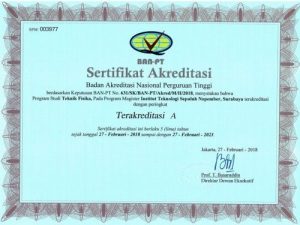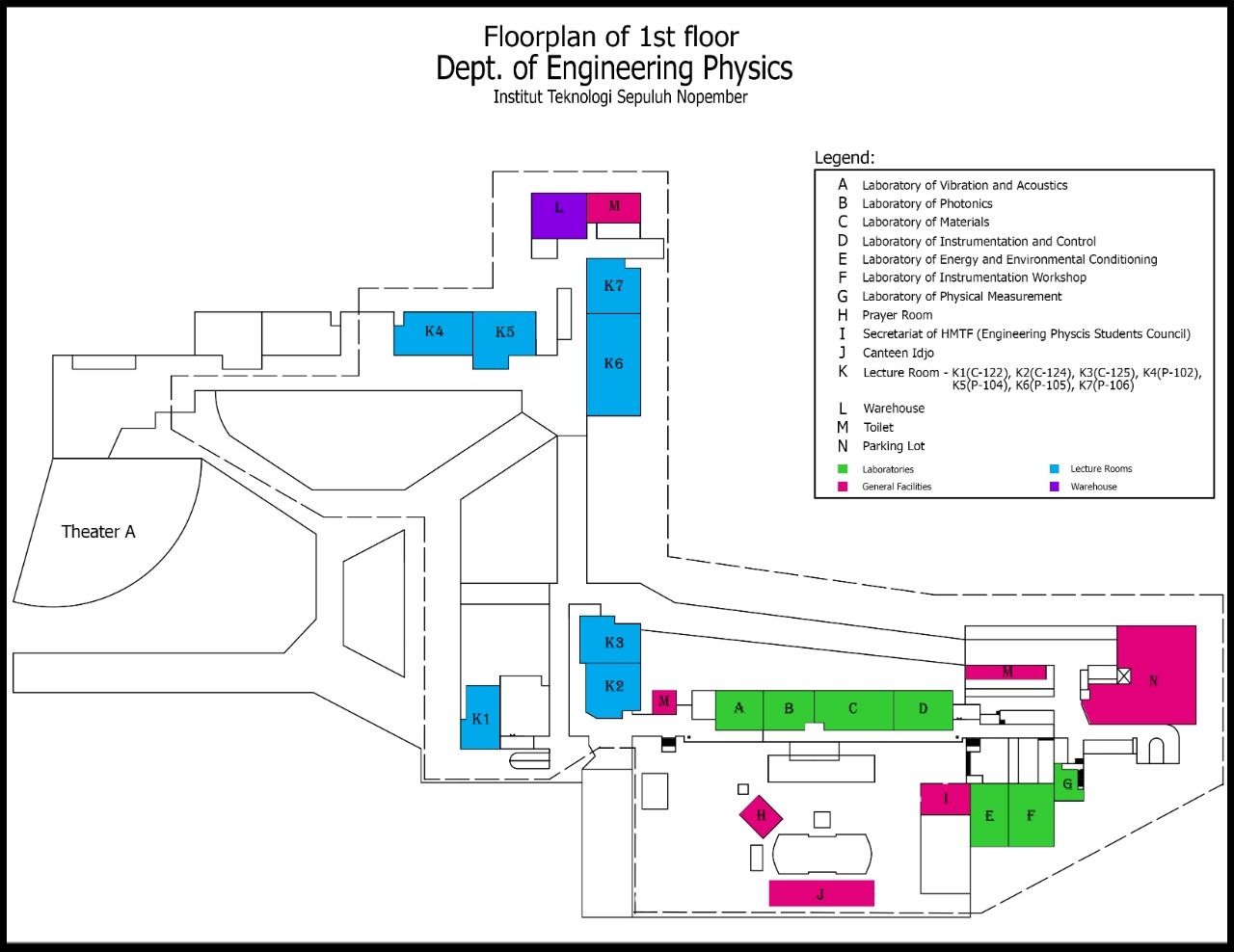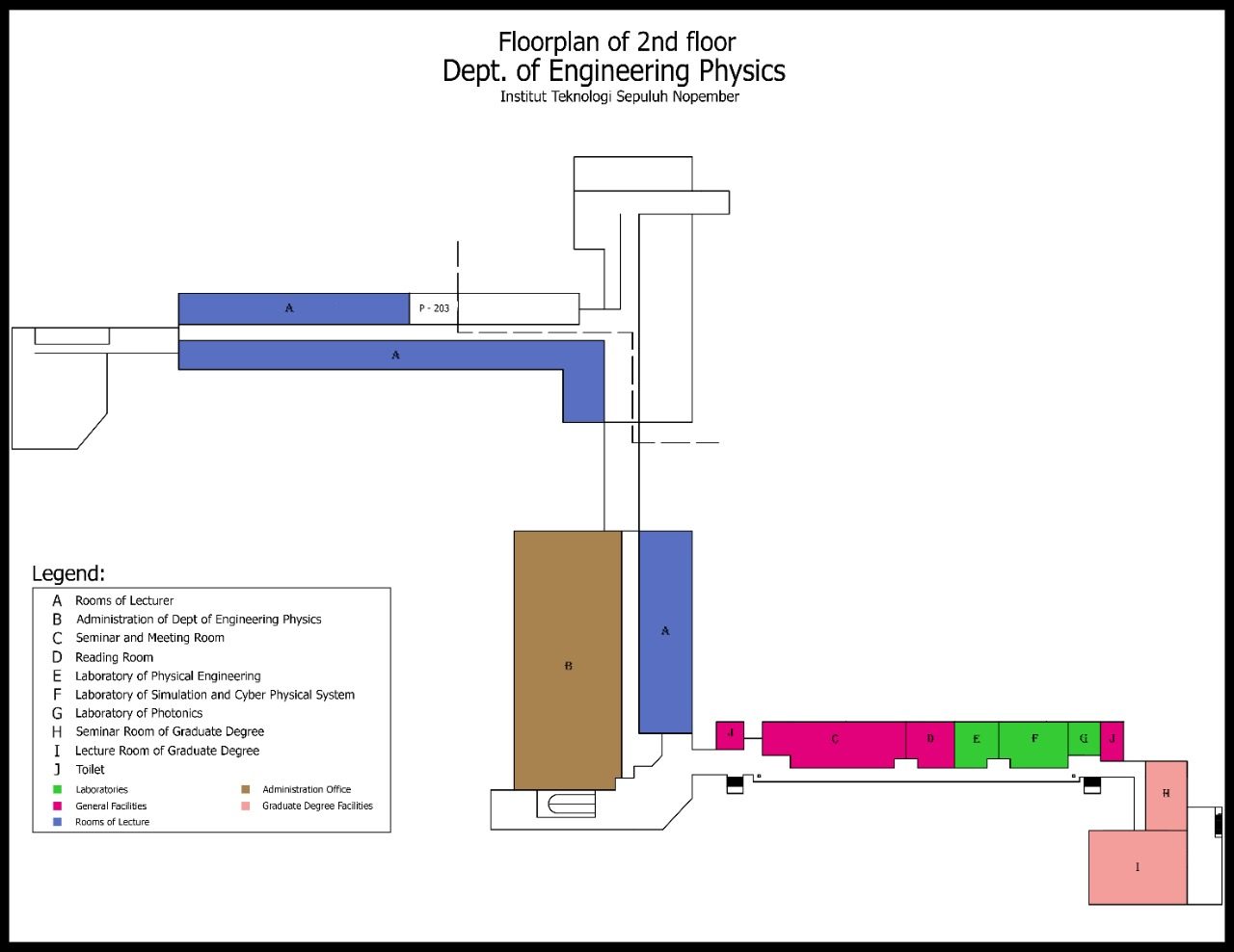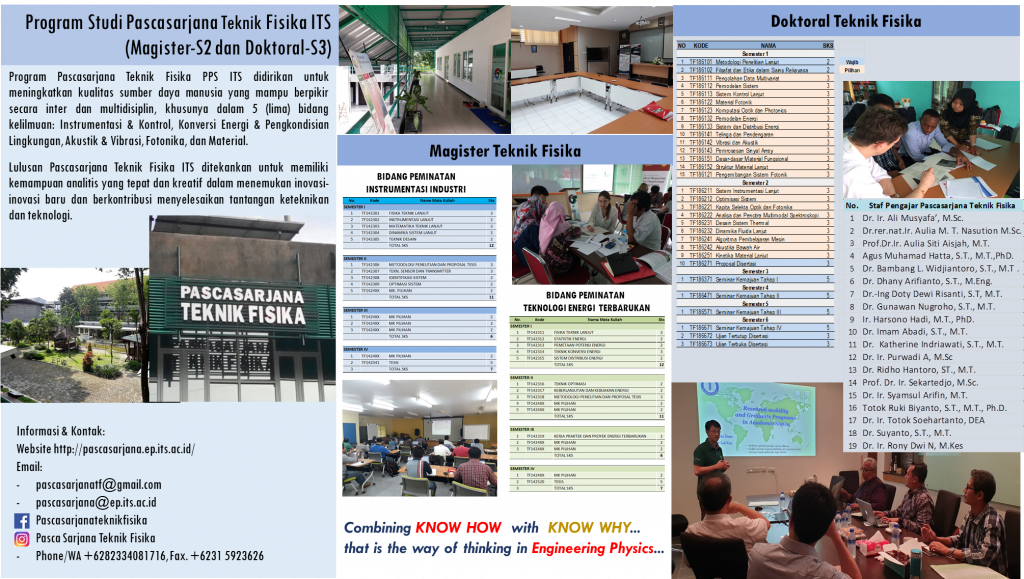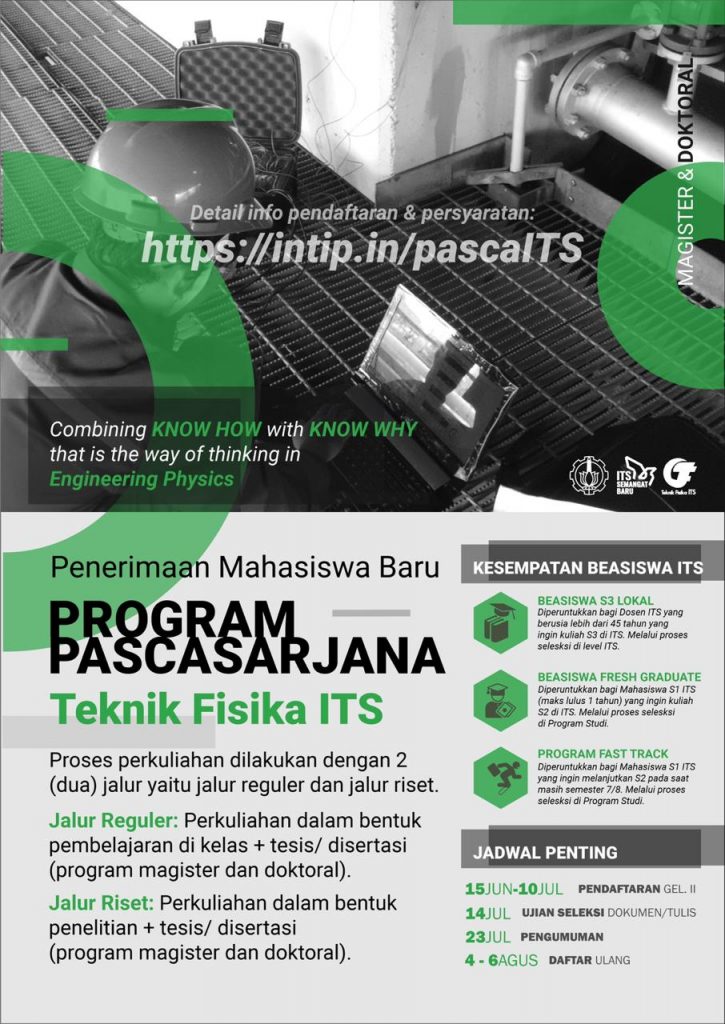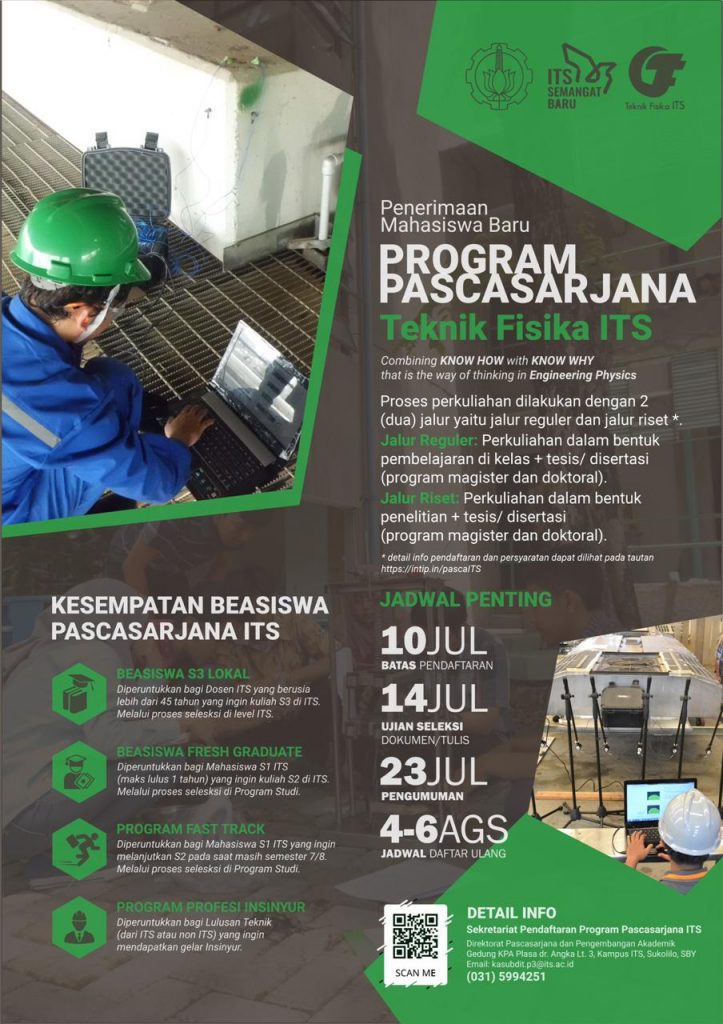Vision
The vision of master program of Eningeering Physics is to become a higher education institution at the master’s level as a reputable center of higher education and research in the field of Engineering Physics both at the national and international level. Futhermore, the master program of Engineering Physics is able to produce graduates who are able to compete at a global level.
Mission
- Performing the education, research, and community service in the field of high-quality and innovative engineering physics science;
- Actively contributing to solving the scientific and engineering problems through research and development of applied technology based on engineering physics collaboration in the central and local governments, industry, and the wider communities;
- Improving the development of science and technology in the field of engineering physics to support the acceleration of national development;
- Improving the quality of education and research to reach a World Class University.
Program’s Education Objective (PEO)
Master program of Engineering Physics (MoEP) ITS has been in existence since 2008 through the Decree of the Directorate General of Higher Education (DIKTI) No. 2202/D/T/2008, July 15, 2008. It is intended to deliver graduates with specific skills and knowledge to pace and overcome the future dynamic changes in their careers. The development process of itended competence profile of graduates is contructed in Figure.1 which involves several parties including the staff, students, alumni and advisory board. Graduates from the Master Program of Engineering Physics are expected to attain the following Program Educational Objective within a few years of graduation:
- A reputation as an expert of innovative solutions to complex problem in the Engineering Physics field, in particular instrumentation engineering and renewable energy technology
- Development in their professional career and progress toward an advanced degree
- Leadership positions in their organization including academia and/or industry
The rapid development of science and technology has changed the paradigm of the study approach in the scientific field, into an integrated approach that is inter and multi-disciplinary. MoEP is an education that combines engineering concepts with a strong mastery of Physics and Mathematics to produce creative and innovative applications. Students are equipped with research and development, design, and analysis capabilities for various industrial physics systems.
